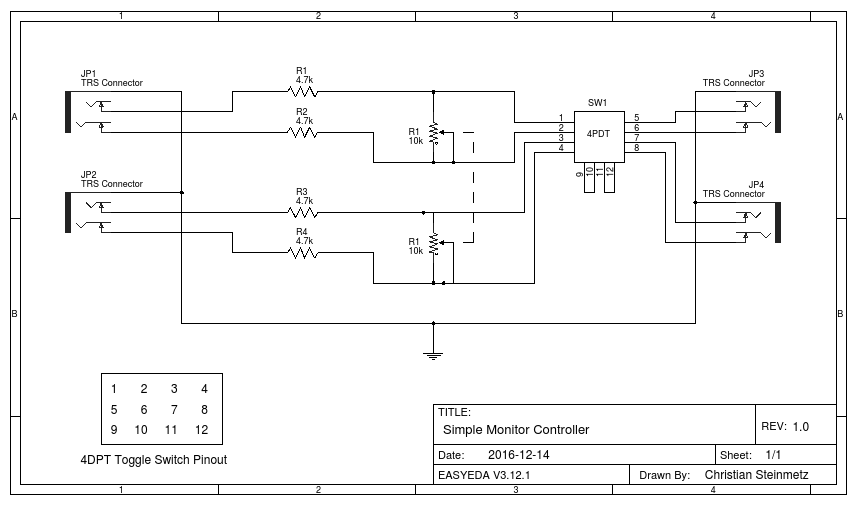The passive pot arrangement shown in your schematic is a much better idea than the four-gang pot Dave mentioned (assuming he means the pot per leg technique; there is a more complex arrangement with variable series and shunt arms that use a four-gang arrangement which is difficult to build for sensible money). The version shown above is nice in that it maintains an accurate signal balance and doesn't introduce an unwanted ground reference... and it needs a dual gang rather than quad gang pot!
But if you want a mono sum as well as the stereo through path, things get complicated as you either have to go active, or use a transformer with dual primaries... And active is much cheaper and arguably much better...
As to the pot versus switched attenuator decision, the latter wins every time for me. Several companies sell pre-built 24-point switched attenuators, but I have always been impressed with the offerings from DACT who offer not only the switches, but also very nice buffer amp circuit boards which the switches can be mounted on directly, which makes the DIY considerably easier. DACT offer a suitable PSU board too, so you'd just need to do a bit of wiring and drill suitable holes in a box!
http://www.dact.com/html/line_stages.html
Chuck a couple of THAT balanced input receivers and balanced output drivers at each end of the signal path, some source select switches, and some passive mix resistors feeding the mono output driver, (or better still, a proper virtual earth mixer around an op-amp) and you have the basis for a very high quality monitor controller. It wouldnt take much extra effort to provide mono and stereo difference monitoring too.
I reviewed a source of ready-made balanced receiver/driver boards complete with TRS sockets not that long ago which could be run off the same DACT power supply too.
https://www.soundonsound.com/reviews/sparkfun-breakout-boards